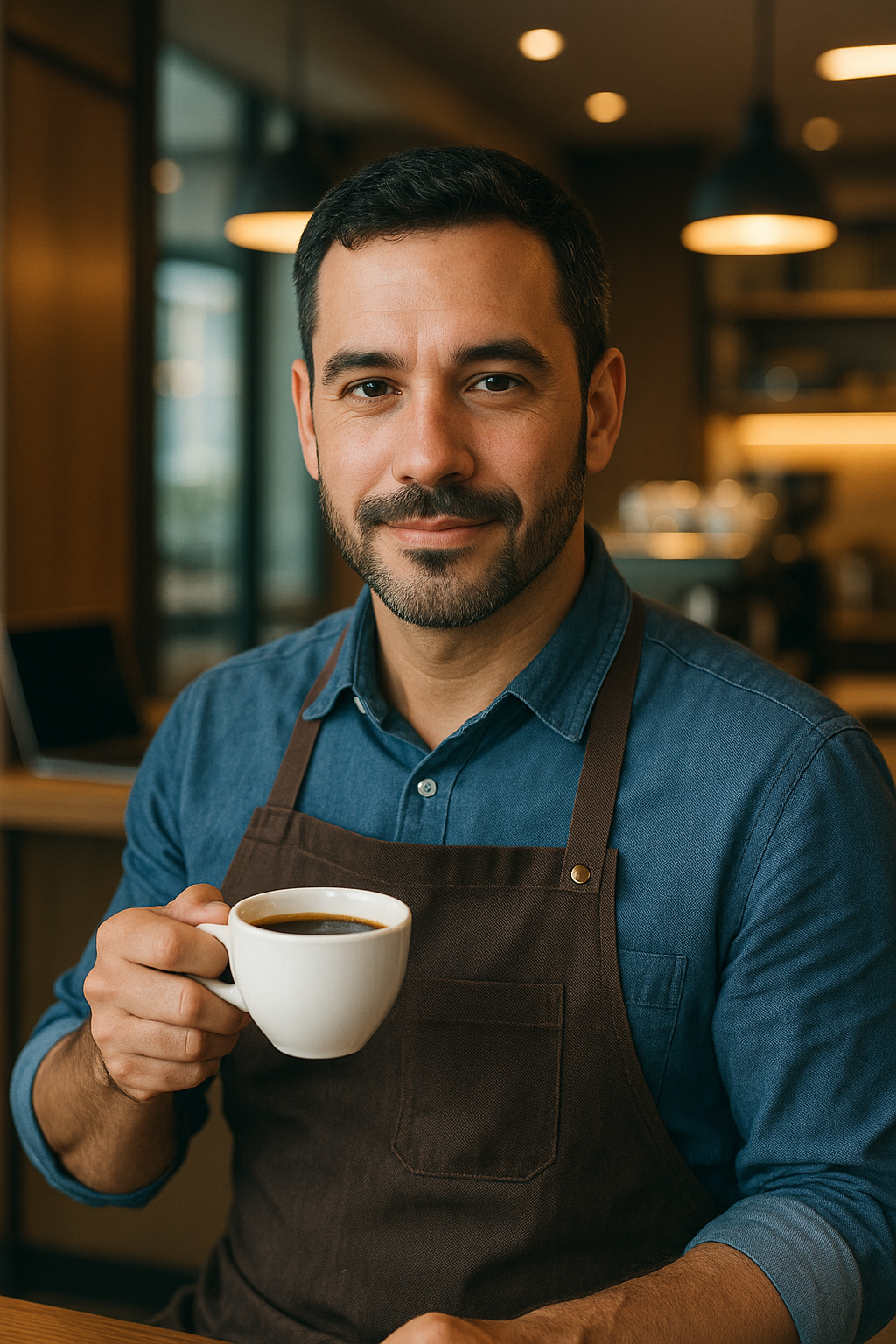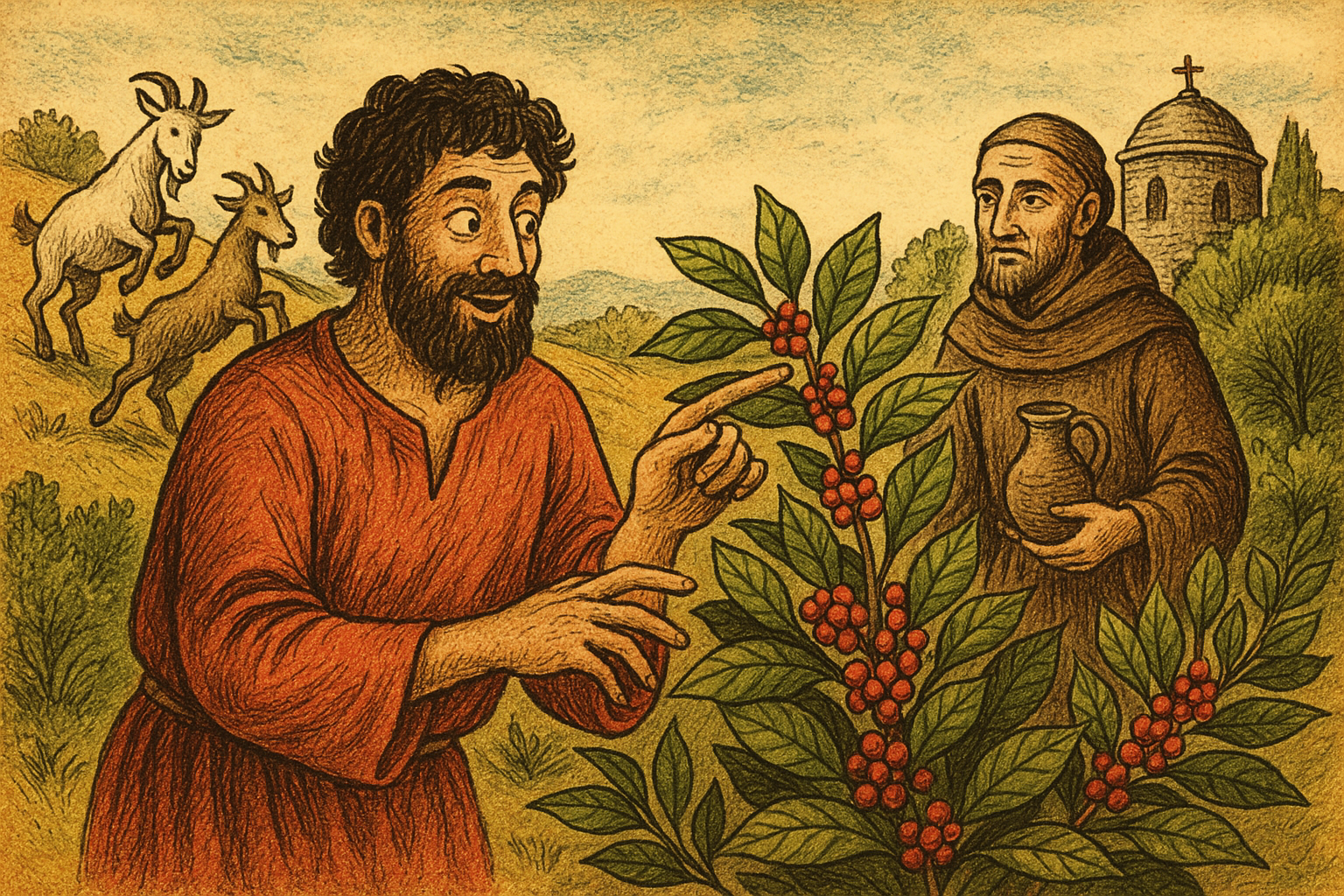Coffee is more than just a beverage; it’s a cultural phenomenon, a global economy, and a source of daily comfort for billions of people. But how did this powerful little bean become so influential around the world?
The story of coffee begins in ancient Ethiopia and winds its way through the Arabian Peninsula, into Europe, and eventually across the globe. In this article, we’ll trace the rich history of coffee—from mystical origins to its current status as one of the most beloved drinks on Earth.
The Origins of Coffee in Ethiopia
The legend of coffee begins with a goat herder named Kaldi in the ancient Ethiopian highlands. According to folklore, Kaldi noticed his goats acting unusually energetic after eating the red berries of a certain tree. Curious, he tried the berries himself and felt an unusual burst of energy.
The story made its way to local monks, who experimented with the berries by creating a drink that would help them stay awake during long prayer sessions. Though this tale cannot be confirmed by historical documents, it is widely accepted that coffee plants are native to Ethiopia and that the region is the birthplace of coffee consumption.
Even today, coffee plays an essential role in Ethiopian culture, where traditional coffee ceremonies are an integral part of hospitality and community bonding.
Yemen and the Rise of Coffee as a Cultivated Crop
From Ethiopia, coffee traveled across the Red Sea to the Arabian Peninsula, specifically Yemen, where it was first cultivated on a larger scale. By the 15th century, Yemeni monks at Sufi shrines were drinking coffee to aid concentration and enhance spiritual experiences.
The port city of Mocha (yes, the name of your favorite chocolate-coffee drink!) became a central hub for the trade of coffee beans. It’s from this city that coffee began its journey to the rest of the Islamic world and beyond.
In the Islamic world, coffee became known as the “wine of Islam” because it provided stimulation without the intoxicating effects forbidden by religion. Coffeehouses called qahveh khaneh started appearing in cities like Mecca and Cairo, quickly becoming popular centers for conversation, storytelling, music, and even political discussion.
Spreading Across the Ottoman Empire
The Ottoman Empire played a major role in popularizing coffee throughout the Middle East, North Africa, and parts of Europe. Turkish coffee—made by boiling finely ground coffee beans in a special pot called a cezve—became a beloved cultural staple.
Coffee even made its way into palace culture. In Istanbul, coffee was so esteemed that it became part of royal rituals, with the sultan’s harem employing special coffee makers known as kahveci usta. Refusing coffee in court could even be seen as a political statement.
Europe Embraces Coffee
Coffee reached Europe in the 17th century, first arriving in Venice via trade with the Ottoman Empire. At first, Europeans were skeptical, with some religious leaders even referring to coffee as “the bitter invention of Satan.” However, after Pope Clement VIII tasted it and gave it his approval, coffee quickly gained popularity.
Coffeehouses spread throughout Europe—first in Italy, then in England, France, Austria, and Germany. These were not just places to drink coffee; they were intellectual hubs where writers, philosophers, scientists, and businessmen met to discuss ideas. In England, they were called “penny universities” because for the price of a penny, one could buy a cup of coffee and participate in lively debate.
Coffee had a hand in shaping the Age of Enlightenment, inspiring revolutionary thought and innovation. Even great thinkers like Voltaire and Isaac Newton were known to frequent coffeehouses.
Colonialism and Coffee’s Global Expansion
The demand for coffee grew rapidly in Europe, prompting colonial powers to cultivate it in tropical colonies. The Dutch were the first to succeed in growing coffee outside of the Arab world, planting it in Java (Indonesia) in the 1600s.
The French brought coffee to the Caribbean, the Spanish introduced it to Central America, and the Portuguese grew it in Brazil. Coffee soon became a major global commodity, tied deeply to colonial expansion and, unfortunately, to slavery.
In Brazil, for example, coffee plantations relied heavily on enslaved African labor until the abolition of slavery in the late 19th century. While coffee brought economic prosperity to some nations, it also contributed to centuries of exploitation—a dark chapter in its otherwise energizing story.
The Birth of Coffee Culture in the Americas
By the 18th and 19th centuries, coffee had become a staple in the Americas. The United States saw a surge in coffee consumption during the Revolutionary War when tea was boycotted. Coffee became associated with patriotism and freedom.
In the 20th century, coffee became central to American culture, with the rise of diners, cafes, and office coffee pots. Instant coffee gained popularity during World War II due to its convenience, especially among soldiers.
Brands like Folgers and Maxwell House became household names, cementing coffee’s place as an essential part of the American lifestyle.
The Rise of Specialty Coffee
The late 20th century saw a dramatic shift in how people viewed and consumed coffee. The emergence of the specialty coffee movement in the 1980s and 1990s changed the narrative. No longer was coffee just a utilitarian beverage; it became a craft.
Roasters began focusing on single-origin beans, ethical sourcing, and artisanal roasting methods. Terms like “light roast,” “third wave,” and “direct trade” entered the public lexicon.
This movement was spearheaded in part by independent cafes, as well as large-scale players like Starbucks, which helped popularize espresso-based drinks and coffee shop culture across the globe.
Coffee in the Digital Age
Today, coffee culture is alive and well, evolving with technology and social trends. People use apps to order their favorite drinks, share latte art on Instagram, and attend virtual coffee tastings.
Sustainability has become a major focus. Coffee drinkers are now more aware of the environmental and ethical implications of their choices. Many seek out organic, fair-trade, and shade-grown beans. Coffee brands are also experimenting with compostable pods, reusable cups, and carbon-neutral farming.
Meanwhile, innovations like cold brew, nitro coffee, and smart brewing gadgets have brought new dimensions to the coffee experience.
Coffee’s Cultural Importance Today
Why has coffee endured for centuries and across so many societies? Part of the answer lies in its social role. Coffee brings people together. It’s a conversation starter, a comfort drink, a productivity booster, and a cultural bridge.
Whether it’s an espresso in Rome, a sweetened condensed milk coffee in Vietnam, or a hand-poured single-origin brew in Portland, coffee carries meaning. It’s both universal and deeply personal.
A Bean That Changed the World
From mystical Ethiopian legends to global commodity status, coffee has shaped economies, societies, and individual lives. It has inspired poets and powered revolutions, built fortunes and ignited friendships.
As you sip your next cup, consider the journey those beans took to get to your hands—the ancient rituals, the intellectual movements, the artistic innovations, and the hard labor that made it possible.
Coffee isn’t just a drink. It’s a story—and that story continues to evolve every day.

Marcelo Oliveira is a coffee enthusiast and content creator specializing in barista skills, brewing methods, equipment reviews, coffee-related health insights, and fascinating curiosities from the coffee world. With a deep passion for every step of the brewing process, he turns technical knowledge into accessible and engaging content for both beginners and seasoned coffee lovers. Marcelo’s goal is to help readers appreciate the full experience of coffee—from bean to cup.
